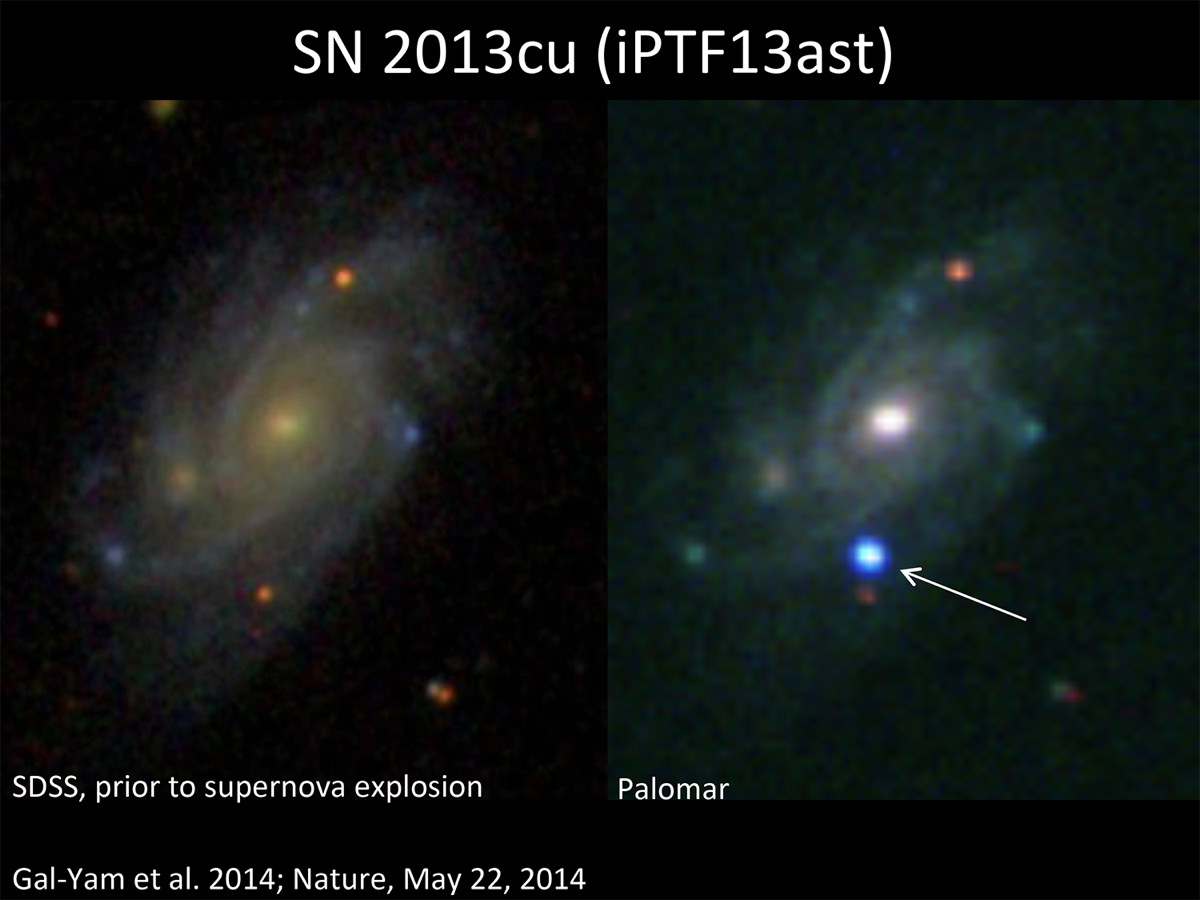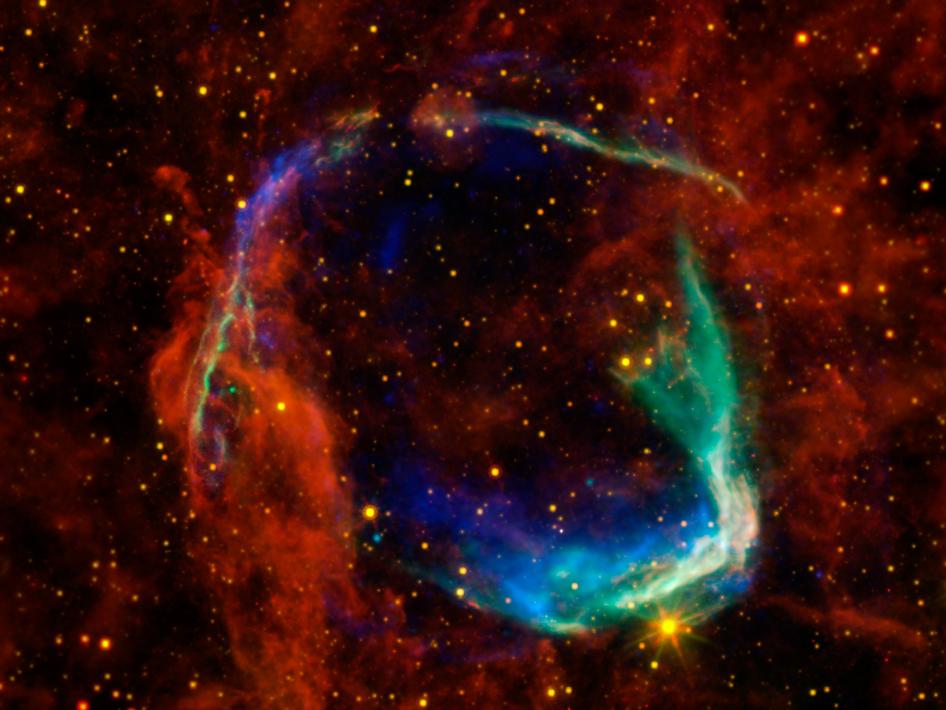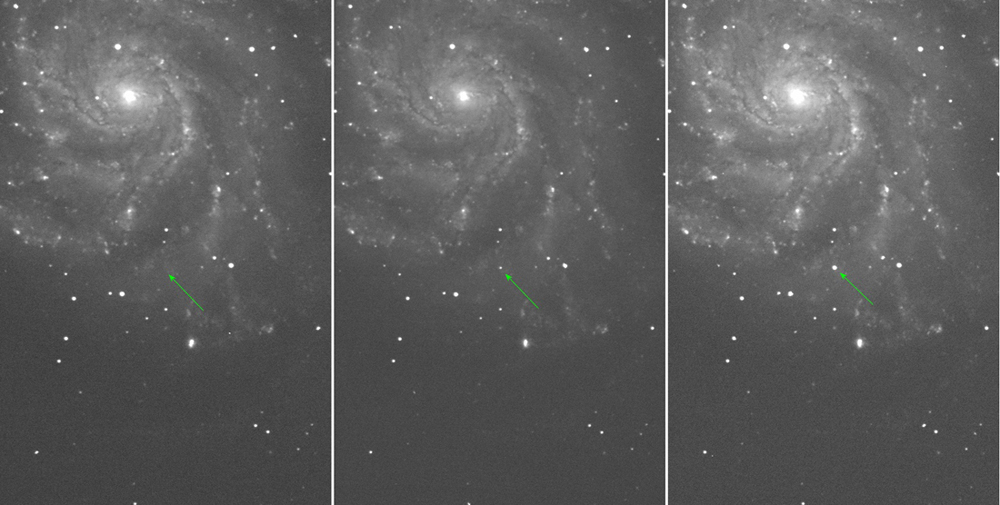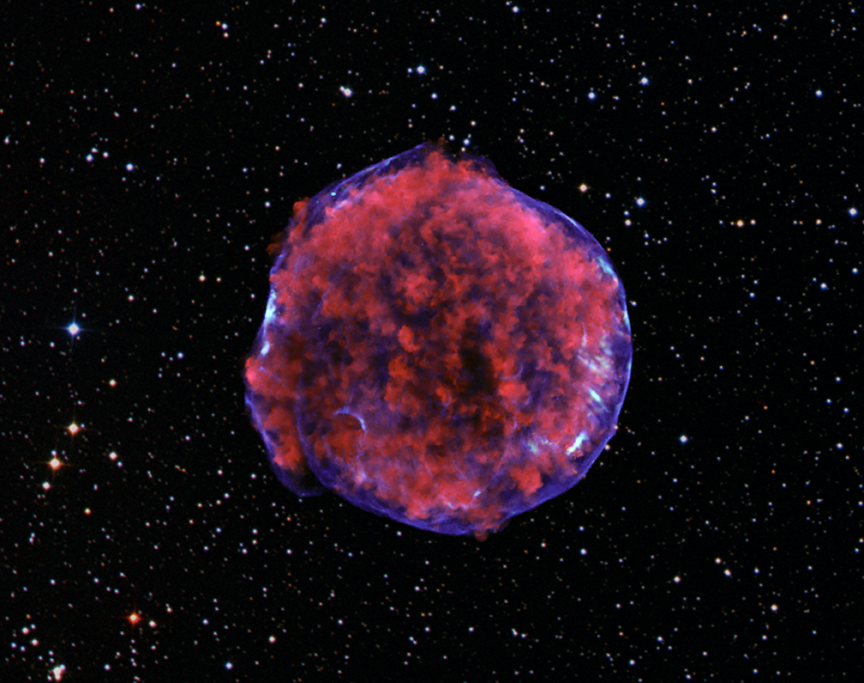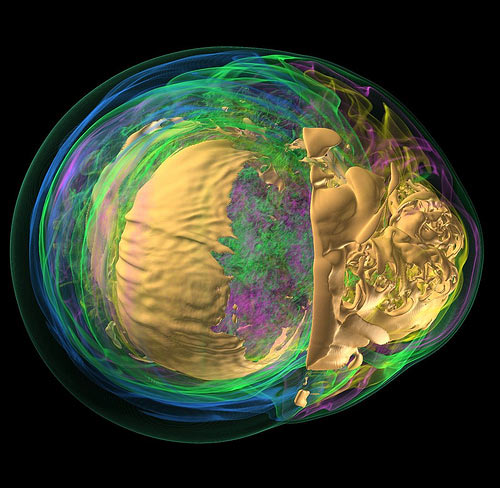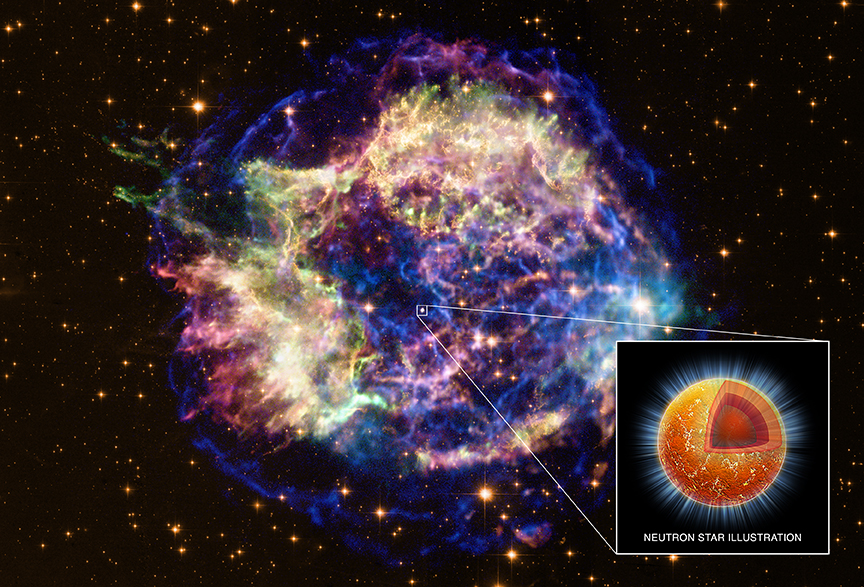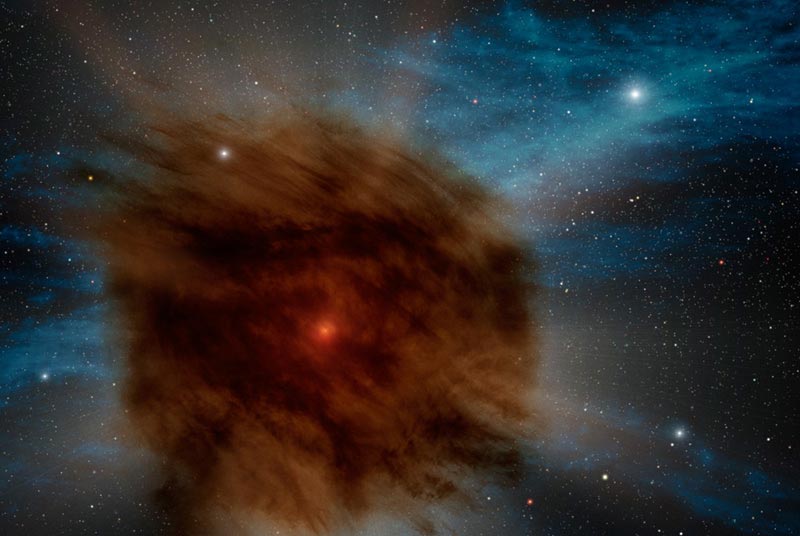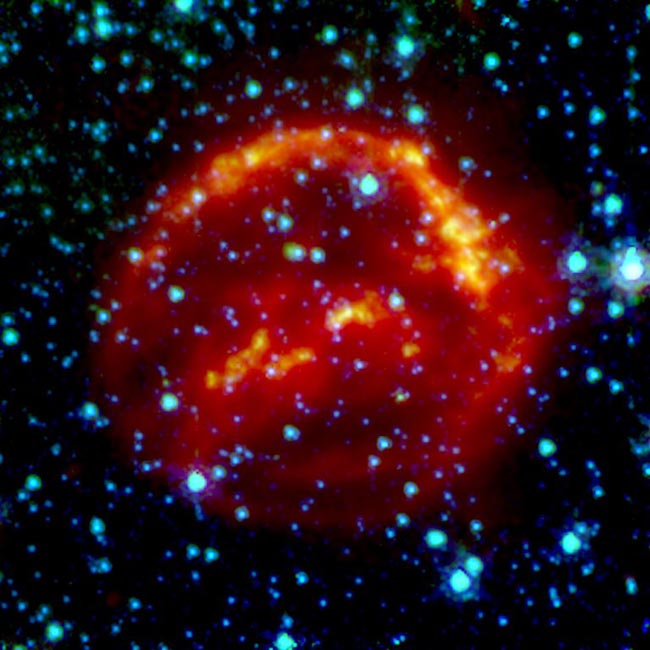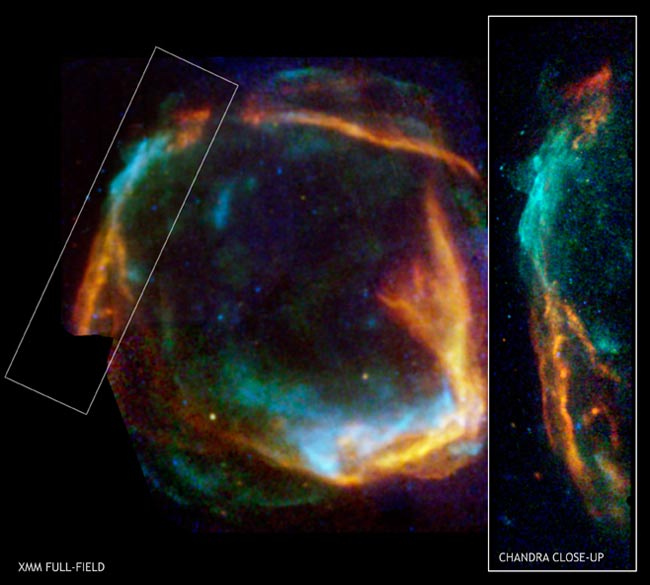Supernova Photos: Great Images of Star Explosions
Supernova in Galaxy UGC 9379
A brilliant supernova (right) explodes in the galaxy UGC 9379, located about 360 million light-years from Earth, in this before-and-after view. The left image was taken by the Sloan Digital Sky Survey, while the right image was obtained with a 60-inch telescope at the Palomar Observatory.
RCW 86 - First Documented Supernova
This image combines data from four different space telescopes to create a multi-wavelength view of all that remains of the oldest documented example of a supernova, called RCW 86. The Chinese witnessed the event in 185 A.D., documenting a mysterious "guest star" that remained in the sky for eight months.
Close Type Ia Supernova PTF 11kly
The arrow marks PTF 11kly in images taken on the Palomar 48-inch telescope over the nights of, from left to right, Aug. 22, 23 and 24. The supernova wasn't there Aug. 22, was discovered Aug. 23, and brightened considerably by Aug. 24.
X-ray Stripes in Tycho Supernova
This image comes from a very deep Chandra observation of the Tycho supernova remnant. Low-energy X-rays (red) in the image show expanding debris from the supernova explosion and high energy X-rays (blue) show the blast wave, a shell of extremely energetic electrons. These high-energy X-rays show a pattern of X-ray "stripes" never previously seen in a supernova remant.
Mock Supernova Created by Supercomputer
This astrophysics simulation seeks to discover the mechanism behind core-collapse supernovae, or the violent death of short-lived, massive stars. The image shows entropy values in the core of the supernova, different colors and transparencies assigned to different values of entropy. By selectively adjusting the color and transparency, the scientist can peel away outer layers and see values in the interior of the 3-D volume.
Supernova Remnant Casseopeia A
This image presents a composite of X-rays from Chandra (red, green, and blue) and optical data from Hubble (gold) of Cassiopeia A, the remains of a massive star that exploded in a supernova. Inset: A cutout of the interior of the neutron star, where densities increase from the crust (orange) to the core (red) and finally to the region where the "superfluid" exists (inner red ball).
Evidence Found for Youngest Black Hole Ever Seen
This composite image shows a supernova within the galaxy M100 that may contain the youngest known black hole in our cosmic neighborhood. The black hole would be about 30 years old and was born from the supernova SN1976C.
Breaking space news, the latest updates on rocket launches, skywatching events and more!
Distant Star Explosion Chokes on Its Own Dust
While searching the skies for black holes using the Spitzer Space Telescope Deep Wide Field Survey, Ohio State University astronomers discovered a giant supernova that was smothered in its own dust. In this artist's rendering, an outer shell of gas and dust — which erupted from the star hundreds of years ago — obscures the supernova within. This event in a distant galaxy hints at one possible future for the brightest star system in our own Milky Way.
Supernova Shrapnel Discovered Inside Meteorite
This false-color image of Kepler’s supernova remnant combines data taken in X-rays (Chandra X-ray Observatory), visible light (Hubble Space Telescope) and infrared radiation (Spitzer Space Telescope). Nicolas Dauphas, from the University of Chicago, and his colleagues have been analyzing meteorites for the microscopic remnants of a supernova that exploded approximately 4.5 billion years ago.
Astronomers Find Supernova First Spotted 2,000 Years Ago
The combined image from the Chandra and XMM-Newton X-ray observatories of RCW 86 shows the expanding ring of debris created after a supernova.
Explosive Debate: Supernova Dust Lost and Found
An infrared image of the portion of the Small Magellanic Cloud containing supernova remnant E0102, plus a composite X-ray, optical and infrared image of E0102.

Space.com is the premier source of space exploration, innovation and astronomy news, chronicling (and celebrating) humanity's ongoing expansion across the final frontier. Originally founded in 1999, Space.com is, and always has been, the passion of writers and editors who are space fans and also trained journalists. Our current news team consists of Editor-in-Chief Tariq Malik; Editor Hanneke Weitering, Senior Space Writer Mike Wall; Senior Writer Meghan Bartels; Senior Writer Chelsea Gohd, Senior Writer Tereza Pultarova and Staff Writer Alexander Cox, focusing on e-commerce. Senior Producer Steve Spaleta oversees our space videos, with Diana Whitcroft as our Social Media Editor.
